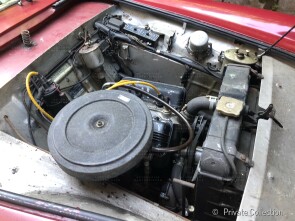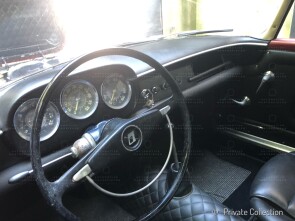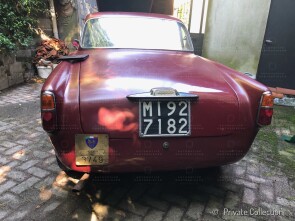
1957 Lancia Appia Sport
ON/OFF
Why am I an Automotive Masterpiece?
D. Remaining cars from extremely limited production runs
10
L. Limited edition cars
no. 10 manufactured, no. 1 remaining
When the Appia left the scene, Ferruccio Bernabò, a well-known journalist and ardent Lancia-lover, wrote: "... you had the look of a young aristocrat, as elegant as sober ... in mechanics, as well as in the line, you had dared to go against the flow - like so many Lancias that preceded you - and for this it was a little difficult for you to impose yourself immediately.” The Appia is a car produced by Lancia from 1953 to 1963; model meant to replace the Ardea. The new car has a very similar line to that of its bigger sister Aurelia.
The special chassis intended for the best Italian coachbuilders for the creation of versions with special fittings (coupés, spyders, convertibles, station wagons, luxury sedans) were produced from 1956 to 1963. Despite the fashion of those years, the first series of the Appia did not receive any custom-built bodywork, above all because Lancia, engaged at that time in the racing sector (before) and in a profound restructuring (later), showed no interest in this type of commercial promotion. Things changed immediately after the launch of the second series in March 1956. The total of the "specials" of the second series is 1,755 units. The real "tailor-made" ones are 21, of which 8 are marked with the identification number 812.00 (and "normal" engine) and 13 with a 53 hp engine and therefore marked with the identification number 812.01. On this latter chassis, Carrozzeria Motto built a small series of sports berlinettas commissioned by a "pool" of Lancia agents: it seems that, although the order was originally for 25 units, Motto actually built only 10. Quoting Ferruccio Bernabò still on the Appia: “And besides it was part of your shy nature ... You had been dressed ... and then, as always without fuss, you won in the competitions of elegance ... " The clothes that the "little" Appia wore in its career were different; one, particularly apt, enhancing its sporting qualities, being modeled in light aluminum alloy, was the work of Rocco Motto. He was the coachbuilder of many famous cars, but almost always working undercover. Specializing in constructions that involved the use of aluminum, before and after the war he set up countless racing cars, which raced successfully in Europe and America. In the 1950s he built sports cars and GT cars; he coached, at the request of Lancia, some lightened Aurelias and these Appias. In the 1960s he then ended up diversifying production and focusing on leisure vehicles.
The 1957 Lancia Appia Coupé, with chassis no. 812.01-1031 is one of, it is assumed, 10 Lancia Appia bodyworked by Motto and made of aluminum, with a very contained cockpit, compared to the proportions of the car with long front and rear hoods. The lines are taut and tapered, very proportionate, interrupted only by the two large side vents. The glazing is large for good visibility. The nose, from the photos observed in comparison with other two specimens, seems to vary slightly from specimen to specimen; in this, is a mouth tapered upwards with a chrome mustache and the Lancia shield, which is joined by two small side grilles inside the headlights. Inside, a sober but not bare cockpit; the dashboard is clearly legible and complete with rev-counter. The general attention to weight leans towards the racing vocation of the vehicle: aluminum construction, simple passenger compartment, lack of bumpers, rear and quarter windows in Perspex; also race-oriented are the generous air intakes and bucket seats. There is also presence of details suitable for long duration races, such as an oversized large capacity tank. However, the model has an important sporting history. There is photographic evidence of two other specimens that took part in sporting events of the time. One raced in the 1st Autumn Cup at the Monza racetrack with Franco Patria. A second specimen raced in the 1957 season with Enrico Coda at the wheel; among the races held: the Coppa Intereuropa, the Trieste-Opicina (where a photo portrays it with the number 94 and a completely street set-up) and the most significant event, the Mille Miglia (for the World Sportscar Championship and which included the Gran Premio Nuvolari), competing with the number 019 and finishing 124th overall. The history of the car chassis no. 812.01-1031 has always been held in northern Italy. A probable and possible sporting use is still under investigation. The car, from the official papers, was registered in Sondrio, in Como and later in Milan, a registration that still has today. The car was purchased already restored in 1993, by its owner until 2021; over the years the mechanics and chassis (head and brakes) have been revised. Between 1993 and 2003 the car was used for regularity races. In 2003 the owner stopped using the car, leaving it guarded, but somewhat forgotten, in a cottage; despite the years spent indoors but without a protective cover, the car showed just a “patina” on parts of the body, while the interior remained in good condition. Around 2022 it was completely restored to pristine condition. It is assumed that this very car is the only surviving example of the small series of Appia bodied by Motto.




